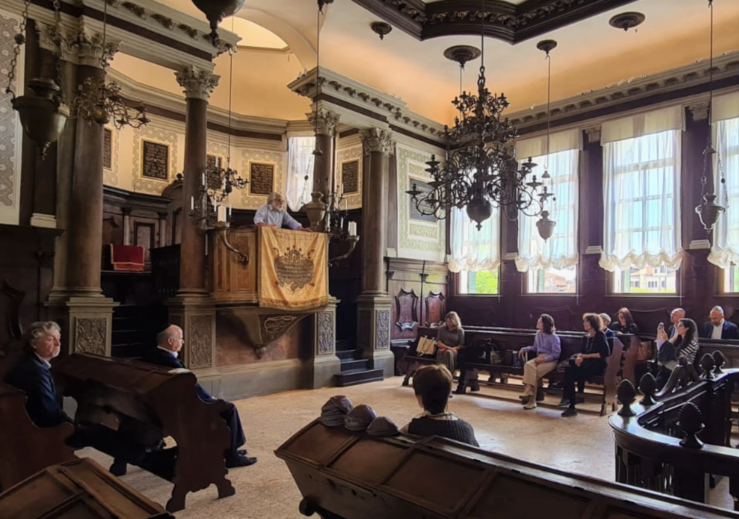Venice, a new life for the Italian Synagogue

The Italian Synagogue, built in 1575, is one of the five synagogues in the ancient Venice Ghetto. It is a symbol of the Jewish-Venetian identity, recognisable also by the five windows that recall the Great German Synagogue and by the small Baroque dome above the apse. Not only is it a symbol, but it is also a heritage of the entire city. This is the spirit that started the process of restoring the Italian Synagogue to a “new life”, thanks to a contribution from the Save Venice organisation, that was part of the ongoing restoration work in the Jewish Museum complex.
The event was celebrated by an official ceremony, with the participation of representatives of both local and national institutions. In the meantime, a press conference was taking place to mark the importance of this commitment, also on an international dimension, which was attended by many remarkable figures. President of the Jewish Community Dario Calimani outlined the development strategies for the Ghetto, Jewish Museum director Marcella Ansaldi represented the history and peculiarities of the Italian Synagogue, Melissa Conn from Save Venice introduced the organisation’s projects and the long-lasting support offered to the Community, David Landau addressed among others the challenge of fundraising, and Alessandro Pedron was the director of works.
Calimani is proud of the results achieved, as can be noticed by his comment: “We are here today to celebrate the restoration of the Italian Synagogue, and to thank Save Venice from the bottom of our hearts. We are particularly moved by the return, today, of a first important portion of the impressive restoration work that has been going on in the Venice Ghetto for three years now: a museum and synagogue area of about 2000 square metres”. It was Jews of Italian origins who built the Italian Synagogue, he then recalled, to maintain the tradition and rituals that distinguished them from Jews of German origins. The latter, fleeing persecution in Central Europe, “had taken refuge in Venice and built the Great German Synagogue and the Canton Synagogue”. It was a situation of “refuge and segregation” as well as “separation and protection”. The Italian Synagogue has since been a centre of life, religion and study “for more than three and a half centuries”. Calimani does not mask his joy: “We are once again in possession of a synagogue, splendid in its sobriety, which we have never abandoned, just as we have never abandoned anything of the religious heritage, culture and life of which we are proud heirs. Our ancestors prayed and studied here. Our community is measured by the large numbers of the past. The 5 or 6 thousand Jews of the 17th century are today reduced to a community of about 400 people. The cultural and artistic heritage of four congregations (German, Italian, Levantine, Spanish-Portuguese) falls on the few of us remaining today. And yet we have never given up and do not mean to give up preserving, living, and passing on life and culture”.
“Humble in deed and with unwavering faith, here on these thresholds let every pious man come and even when he turns his foot elsewhere always keep his thoughts turned to God”. This warning in the 19th-century style can be read in the small entrance of the Italian Synagogue, that is the gateway to a noble and severe environment. And this, as was pointed out today, also “for the simple austerity of its pews, for the remarkable Sacred Ark adorned with elegant wooden friezes and culminating in a heavy pediment, for the beautiful 18th-century pulpit protruding from a polygonal apse”. A treasure that now returns to reveal itself to all.
Translation by Martina Bandini, student at the Secondary School of Modern Languages for Interpreters and Translators of the University of Trieste, intern at the newspaper office of the Union of the Italian Jewish Communities – Pagine Ebraiche.
